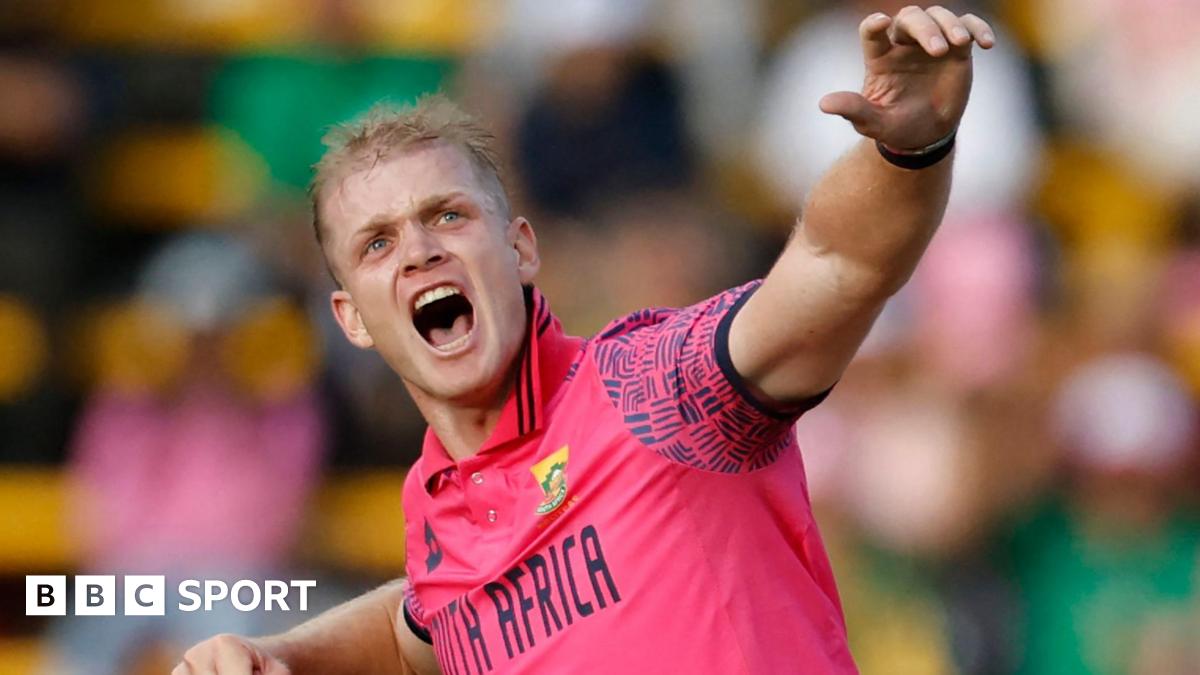Punching ‘below’ their weight, what’s troubling New Zealand cricket? | New Zealand tour of India, 2024

New Zealand have won only one-third of their Tests since winning the World Test Championship in 2021
It was only three years ago, when New Zealand won the maiden World Test Championship (WTC) title, that everyone anticipated the Blackcaps’ continuous rise. They had been there and thereabouts in ICC events, always making their presence felt but hadn’t won a title for long.
However, the fortunes have plummeted again for the Kiwis. They didn’t qualify for the succeeding WTC final and are sixth on the table for the ongoing 2023-25 cycle. They have won only 34.5% of their matches since winning the Test mace in Southampton.
Having played 11 series since then, New Zealand have won only two, with three drawn series at home and lost one. They have won only one of their 11 away Tests in this period. When teams are judged by their away record, New Zealand’s last overseas win came in 2021, right before the WTC final, when they won 1-0 in England.
Set to begin a three-match Test series in India, New Zealand are coming from a 0-2 defeat in Sri Lanka. Their batting capitulation in the second Test (88 & 360 all out in response to SL’s 602/5) has made their recent struggles more prominent.
The inevitable question arises: What is troubling New Zealand cricket?
And the answer lies in the performance as well as the innate dynamics of their cricket.
Where will the runs come from?
New Zealand’s batting average of 30.5 in Tests since July 2021 seems alright in comparison with other teams. However, digging deeper opens a can of worms.
Only two of their established five batters have averaged over 40 in the second and third WTC cycles. Both their openers, Tom Latham and Devon Conway, have been underwhelming.
Latham’s last hundred came in December 2022 and Conway’s in January 2023. In their last six Tests, they average 26.4 and 15.4 respectively.
Down the order, Kane Williamson averages a breathtaking 56.9. He has been a run machine at home (average 73.8) and averages 43.3 away, but you take out his 200* in Karachi, and his away average falls to 30.8. He has still been New Zealand’s best batter in these times but without being as effective in overseas conditions. Williamson’s string of injuries has also not helped New Zealand’s cause. The former skipper is now going to miss the first Test against India due to a groin injury.
When New Zealand lost to England 0-3 in 2022, Daryl Mitchell and Tom Blundell scored nearly 49% of their team’s total runs. As the run-scoring from them has come down to a rather believable measure, the rest of the team has failed to put up the needed runs.
Noticeably, eight of New Zealand’s 11 away Tests have been in Asia, highlighting their frailties against spin. Even in their best days, New Zealand struggled in India owing to the high-quality spinners. Averaging only 27.7 against spin in the considered time frame, the Blackcaps have won just one of these eight Tests when they squared the series in Bangladesh in 2023.
Even at home, New Zealand conceded 13 wickets to Nathan Lyon against Australia and eight each to Neil Brand (left-arm spinner) and Dane Piedt (off-spinner) against South Africa. All of them were the highest wicket-takers from their teams in those series. Consequently, the Kiwis have the second-most proportion of wickets against spin.
The likes of Conway, Latham and Daryl Mitchell are assessed as good batters of spin bowling in white-ball cricket but have struggled to maintain that reputation in this glum period for New Zealand.
Williamson’s away average of 49.2 is a decent number but the fall from his home average is a testament to the tough times Kiwis have faced away.
And more than 40% of all their dismissals – spin or pace – are against finger spin.
For a team that won the Test championship mace three years ago, New Zealand have been awful against spin bowling. And that takes us to our next point…
No country for spinners
New Zealand’s travails against spin bowling could also have stemmed from the lack of spin-bowling culture in the country. After Daniel Vettori, New Zealand’s third-highest wicket-taker in Tests (361), the next spinner on the list is John Bracewell (102), Player of the Match in New Zealand’s last Test win in India in 1988.
Spinners simply don’t bowl much in New Zealand. At home, Blackcaps play only batting all-rounders who bowl decent spin, but are still part-timers even in franchise cricket — Glenn Phillips, Michael Bracewell and Rachin Ravindra. Then there is Mitchell Santner who has played a grand total of one Test back home since 2021.
ALSO READ: How bad are Santner’s numbers in Tests? Way worse than you think
Ajaz Patel has played only 18 Tests since his debut in 2018, playing 13 of them in Asia. His average and strike rate of 30.4 and 58.8 are comparable with the numbers of Harbhajan Singh, Graeme Swann and Anil Kumble after 18 Tests. Yet, he has to wait for away Tests to get in the XI.
Phillips has been a bonus with his 22 wickets at 24.5 runs apiece but New Zealand have overall lacked the penetration with the spinners on. In Sri Lanka, the Kiwi spinners averaged 55.2 as compared to Sri Lanka’s 23.4.
One cannot blame New Zealand for not their spin-bowling tactics at home but touring overseas, especially Asia, the Kiwis neither have the batting to tackle spin nor the spin-bowling to bulldoze the opposition.
Due to green pitches, there are not much spinners in the pipeline as well, with most of their first-class spinners around 30 years old or more and with less than 100 wickets. Patel himself will be 36 soon. New Zealand simply don’t have more impactful spinners coming up. Their best bet is the wrist-spinner Adhithya Ashok who has already played one ODI and one T20I. He is only 22 and has pouched 36 wickets in 10 first-class matches, making him a red-ball prospect as well.
What about the pace bowling though?
New Zealand’s seam-bowling was at its best during the first WTC cycle. But with time, the numbers have dropped.
Trent Boult played his last Test in 2022, Neil Wagner is now retired and Kyle Jamieson is out again due to injury. Only Tim Southee is left from the celebrated quartet that took them to the mace in 2021.
And Southee’s own form has made Kiwis quite ineffective in the pace department. His average (73.1) and strike rate (132.1) are both the worst for a bowler with more than five Tests this year. He has been on an up-and-down curve in the last few years. He’s had three five-fors in the previous and ongoing WTC cycle but again, his average (37.5) and strike rate (73.9) are the worst for any bowler with at least 50 Test wickets on this metric.
They have Matt Henry but much like Patel, he is a condition-based option for the Kiwis, playing nine of his last 11 Tests in New Zealand.
In transition phase, New Zealand eye William O’Rourke to be the X-factor in their seam attack. He picked a five-for in the first Test in Sri Lanka — the first Kiwi pacer to do so since Southee in 2012 – and Blackcaps must be hoping that they can improve their seam-bowling numbers with him.
*All stats are post WTC 2019-21 unless stated otherwise
If you’ve not downloaded the Cricket.com app yet, you’re missing out on our content — big time. Download the App here.
Related
‘Listen from one ear, ignore from the other’: Former India…
India's Rohit Sharma and Mohammed Shami (AP Photo) NEW DELHI: Former wicketkeeper-batter Syed Kirmani has expressed his opinion that experienced fast bowler Mo
India faces New Zealand in budding rivalry at Champions Trophy…
State AlabamaAlaskaArizonaArkansasCa
ICC and Unilever announce landmark partnership on International Women’s Day…
The two-year partnership, kicking off at this year’s Women’s Cricket World Cup in India and running until the end of 2027, marks the world cricket governing
IPL 2025: Mumbai Indians sign Corbin Bosch as replacement for…
Mumbai Indians have signed South Africa all-rounder Corbin Bosch as a replacement for his injured countryman Lizaad Williams for this year's Indian Premier Leag















